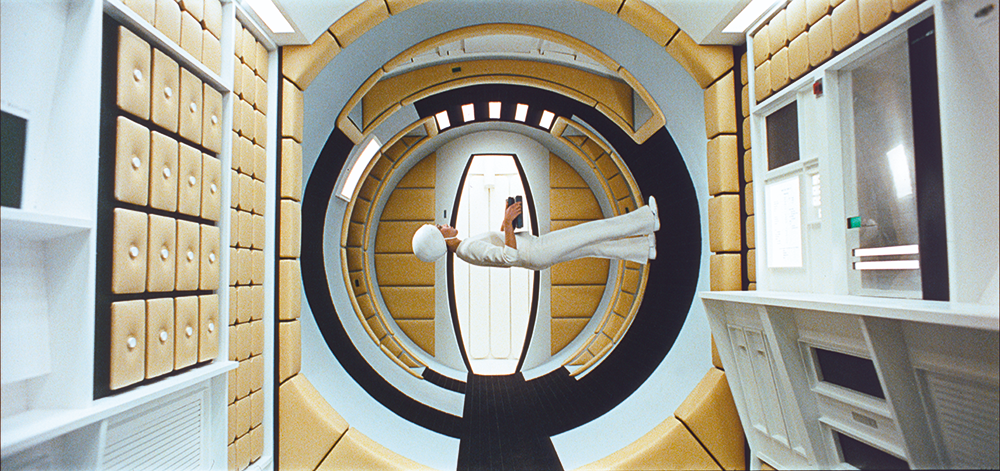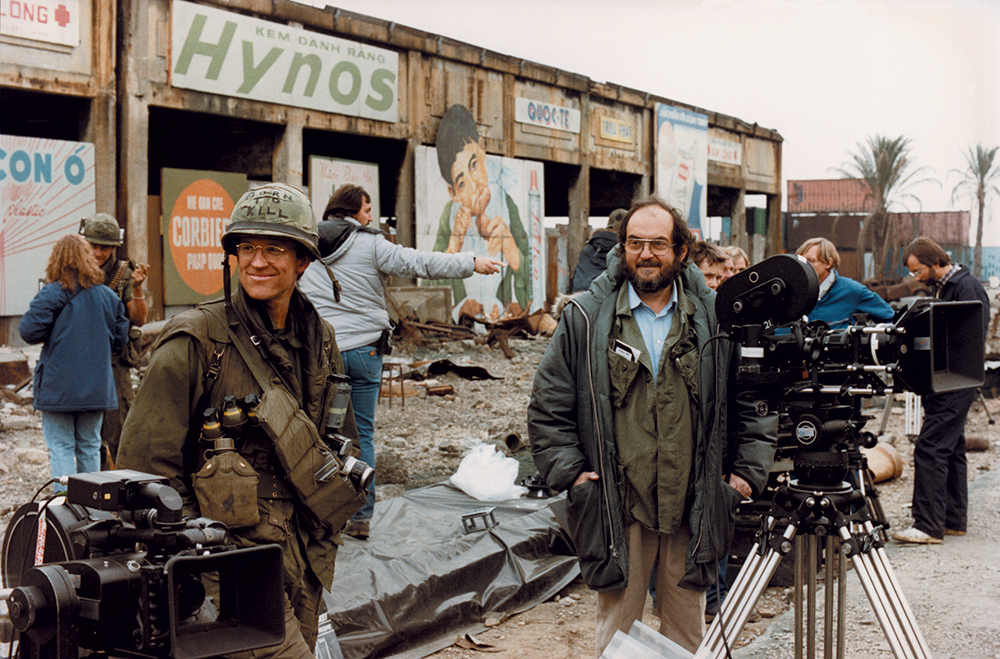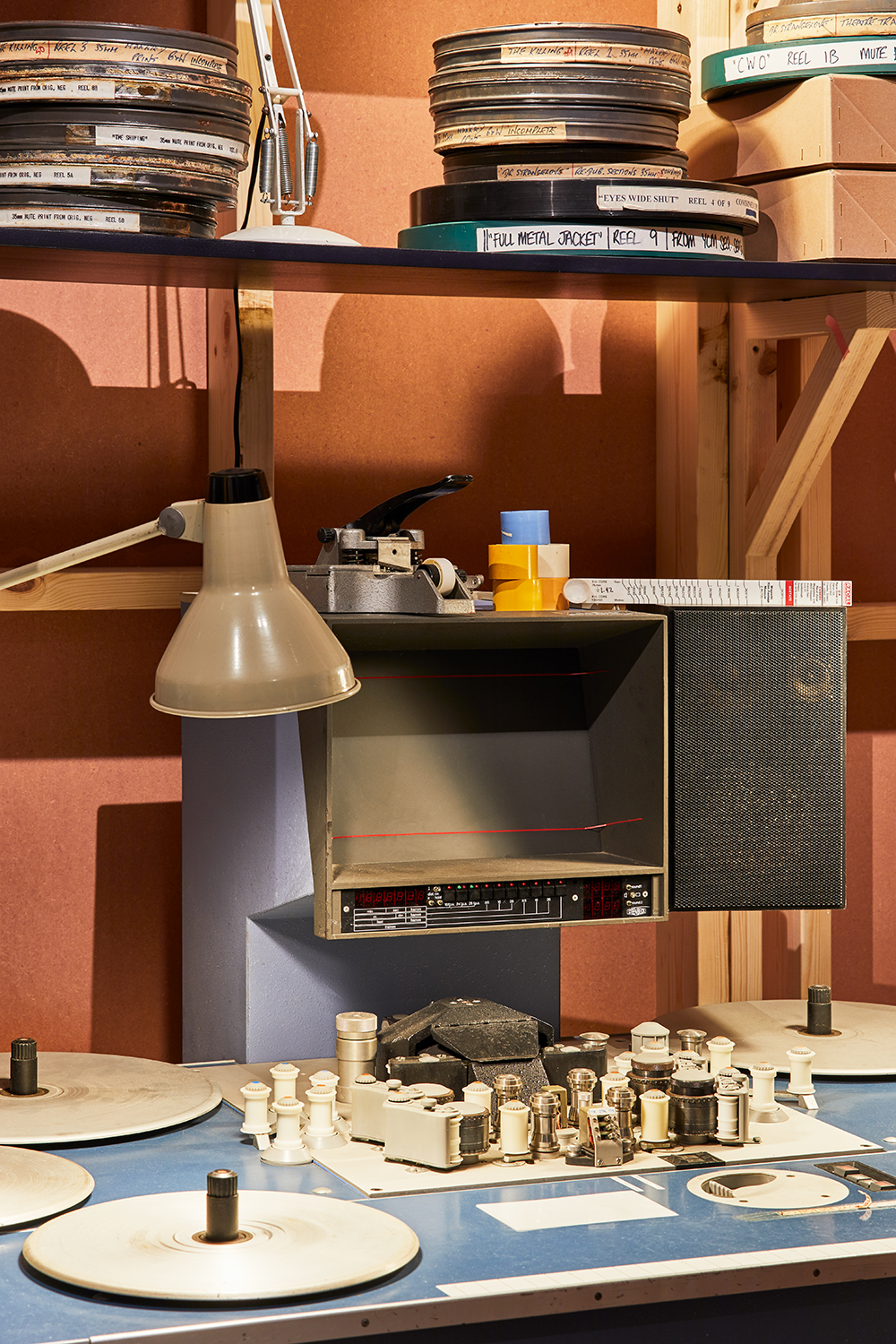Pentagram’s Marina Willer, who led the design of the exhibition, says that Kubrick was a visionary “who foresaw what design would be like in the future”.
Marina Willer’s team at Pentagram has designed the graphics and exhibition for Stanley Kubrick: The Exhibition at the Design Museum in London, which marks two-decades since the death of the director behind films including 2001 Space Odyssey, A Clockwork Orange , Eyes Wide Shut and Full Metal Jacket.
“Obviously we’re all big fans of Kubrick as a filmmaker and designer so many designers love his work,” says Willer, who was brought in to work on the project in September last year, having previously designed the Ferrari exhibition at the Design Museum. “He was very aware of design, there’s a real control over every single decision when it comes to the composition, colour, typography and the objects,” Willer adds.
At the Design Museum show, visitors enter on a replica of the unmistakable orange, red and brown hexagonal patterned carpet from The Overlook Hotel corridor scene in the The Shining. According to the Film and Furniture site run by Paula Benson, co-founder and creative director of design consultancy Form, the carpet was created by interior designer David Hicks. The pattern, Hicks’ Hexagon, was in production in the 1960s, prior to The Shining‘s release in 1980, so the site concludes that “the carpet which appeared in The Overlook Hotel was either an off-the shelf purchase for the film or a copy made for filming.” Film and Furniture adds, “the graphic pattern lends itself to working particularly well in Kubrick’s symmetrical, ‘one point perspective’ framing and adds a more dramatic sense of perspective and a lengthening effect of the corridor.”
This technique is brought alive in the following section of the exhibition, which see visitors enter a “one-point perspective” corridor mirroring Kubrick’s famous camera technique. This is filled with screens showing Pentagram’s edit of some of Kubrick’s most “iconic films,” says Willer.
Visitors emerge into the main part of the show as though they’re moving behind those screens, underscoring that they’re now seeing the process that went into making Kubrick’s movies. Willer describes Kubrick’s directorial mindset as “obsessive — he controlled every aspect of the production and wanted to make all the decisions himself, from the music to the set design and directing the actors to the camera work.”
She adds: “Overall the central area looks like backstage, so it’s warm — there’s a real ambiance like you’re entering Kubrick’s mind, where he’d work late at night. You see all his scribbles, and as it’s pre-digital you see the print in large scale.”
Willer and her team created several themed rooms throughout the show, each based on a different film’s unique “world”. These include Barry Lyndon, 2001: Space Odyssey, Full Metal Jacket, A Clockwork Orange, The Shining, Paths of Glory, Spartacus, Lolita, Eyes Wide Shut and Dr Strangelove. These spaces reference the films in their colour palettes and the sound design, as well as the lighting. Willer says, “There are lots of subtle design visions that connect each space to the films. Each film feels its its own little universe.”

Audio quotes from Kubrick himself guides visitors through the space, aiming to give insights into who he was both as a person, through personal anecdotes, and in terms of how he used his notoriously complex, technically exacting shooting techniques. His processes are exhibited through materials including archive and production documents alongside props, set designs, storyboards, cameras and lenses; as well as original costumes including the star-child and the man-ape costume from 2001: A Space Odyssey, the dresses of the twin sisters and Jack Torrance’s axe from The Shining, the “Born to Kill” helmet from Full Metal Jacket and the masks from Eyes Wide Shut. Models of various film sets demonstrate the complex use of studio constructions and camera technique.
According to Willer, the main design considerations when working with such a wealth of archive imagery and on a show about moving image was lighting: “We did a mood board for what the lighting should look like,” she says. “It can’t be too bright, as you won’t appreciate the quality of the screens, but not too dark so that you can still see the objects. [The exhibition] has an engaging, filmic quality and draws you in.”
Work from Saul Bass—who designed the titles for 1960 film Spartacus and the poster for The Shining, is featured in the show. Other creatives commissioned by Kubrick include fashion designer Hardy Amies, costume designer Milena Canonero, set designer Ken Adam, architect and industrial designer Elliot Noyes and product designer Pascal Mourgue, whose work is all in the show alongside photography by Diane Arbus, Allen Jones and Don McCullin.
Kubrick’s entire career is covered, from his early short documentaries to his last film, Eyes Wide Shut, to his unrealised projects Napoleon and Aryan Papers. As well as Kubrick’s film work, the show also presents his early career as a photographer who worked for the magazine Look.
“Kubrick foresaw what design would be like in the future”
Willer’s team worked across all exhibition collateral inducing marketing materials, signage, way finding and the design of the show itself, supported by William Russell Architects, an independent architecture and design consultancy set up by former Pentagram partner William Russell.

“Kubrick foresaw what design would be like in the future,” says Willer. “He anticipated so many things that we see today in technology: the monolith in 2001: Space Odyssey kind of foresees the tablet and mobile phone, but everything from the foods we’d be eating to how brands are presented today, he understood.”
The Design Museum show is the current leg of various Stanley Kubrick Exhibition tours which have been ongoing in various iterations since 2004. Previous sites include Frankfurt, Berlin, Melbourne, Gent, Zurich, Rome, Paris, Amsterdam, Los Angeles, São Paulo, Krakow, Toronto, Monterrey, Seoul, San Francisco, Mexico City and Copenhagen. Though Kubrick lived and worked in Britain for more than 40 years, the London exhibition is the first time the show has been presented here.

“It was in the UK that Kubrick created the battlefields of Vietnam for Full Metal Jacket (1987), an orbiting space station for 2001: A Space Odyssey (1968) and Dr Strangelove’s War Room (1964),” says the Design Museum. “London was his endlessly inventive canvas.”

Stanley Kubrick: The Exhibition runs from 26 April 2019 – 15 September 2019 at the Design Museum, London, 224 – 238 Kensington High Street London W8 6AG